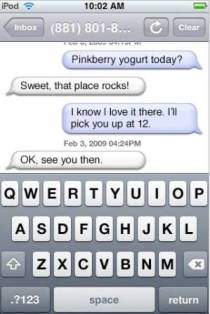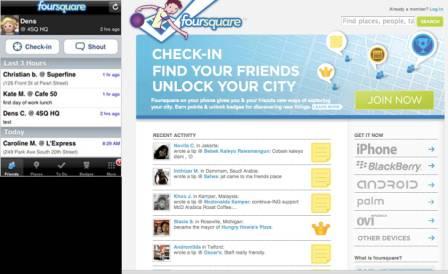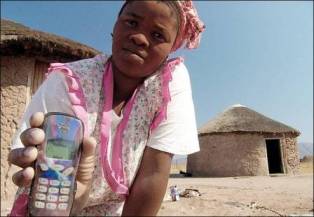Designing/Refining Your Mobile Strategy
Fourteen Approaches to Consider as You Reach Out to Customers Using Mobile Devices
In the next five years, mobile phones will surpass computers as the most prevalent way to do business online. Your business needs a mobile strategy. Appropriate mobile strategies range from ignoring mobile devices to spawning a vibrant ecosystem of mobile apps in and around your brand. There are many options in between those two extremes. You can create a mobile strategy to suit your customers’ needs by mixing and matching the fourteen building blocks described in this article.
NETTING IT OUT
Mobile apps are hot! But developing and deploying mobile apps is just one of many opportunities you have to reach target customers via their mobile devices. Before you decide what your mobile strategy should be, and whether or not you need one, take a step back. Why do you need a mobile strategy?
How do your target customers use their mobile devices? What opportunities do mobile devices present to cement better relationships with customers?
In the next five years, more customers will be using mobile devices to interact with our businesses via the Internet than they will by logging on to our Web sites from their computers. Here are 14 different mobile strategies you could mix and match to meet your customers’ mobile needs.

Illustration 1. Texting is young people’s preferred means of communication via mobile phone. © 2010 Textfree Unlimited
HOW DO YOUR CUSTOMERS USE THEIR MOBILE DEVICES?
Staying in Touch with Friends
Sixteen-year old Samantha (her friends call her Sammy) is never without her cell phone. She spends most of her waking moments texting her friends. She’s annoyed that she’s not allowed to text in class and has to check her phone at the door and pick it up after class. But the rest of the time, she’s constantly checking in, commenting on her life, and telling her buddies how she feels about things. Her parents now text her, too. When they want to know where she is or what she’s doing, they send a brief text. She sighs and responds quickly to get them off her back. Sometimes she uses her mobile phone to make phone calls, but, more often, she’ll check on something she needs to know using the Web browser on her phone. (What time does the show start? What’s the address of the meet-up place? Are there any tickets left? When’s the next bus?) She’ll then text the info to her friend or post to a group or send a link. She usually doesn’t mind getting text messages from her favorite brands promoting special offers or events. She often shares these with her friends, and they arrange to meet nearby.

Illustration 2. Foursquare is a popular mobile application that encourages users to “check in” to particular locations. © 2010 foursquare
Filling “Down Time”
GEO-TARGETING. Jake (a forty-something family man) was waiting for his tires to be changed at his neighborhood car repair shop. He whiled away the time with his smartphone by checking email and using his favorite Facebook application—Foursquare—where he “checks in” to a location, in this case, the address of his local service station, and earns points and cachet among other Foursquare users by signing in most frequently to particular locations. Foursquare has become oddly competitive for Jake. He has been vying with an 18-year old neighbor for who gets to be “mayor” of their local train station by logging in to that location the most.
As Jake is playing with his smartphone, up pops an offer from an appliance retailer across the street. It’s an online coupon for 20 percent off a major appliance with free installation. Jake knows the two-generation family that runs the local appliance store. They’re pretty old school. He’s surprised that they figured out how to create an ad that would pop up on his mobile device when he’s in the area. But, on reflection, he realizes that this small local retailer is fighting for its survival with two “Big Box” retailers within five miles—both of which sell major appliances. Jake didn’t need an appliance at the time, but, when the family’s washing machine broke down a few weeks later, he remembered the outreach and made a point of buying from the local retailer.
STAYING INFORMED & ENGAGING OTHERS. Pam is a busy, wired executive. She relies on her Blackberry to keep her in touch with clients and colleagues, as well as with what’s going on in the world and in her field. While waiting for her annual physical, garbed in her paper gown, sitting on the exam table in a slightly chilly room, she checks her Blackberry. She notices an interesting headline and opens the email message to read the article. She’s happy that she can read the long article by scrolling thru the story in her Blackberry email. She’s relieved that she doesn’t have to click through to a Web site and wait for 30 seconds to two minutes for the browser to launch and the Web site to load up in order for her to finish reading the article. She’s particularly impressed when she finds that she can comment on the article right from her email, and, when she does so, she can click a box that will automatically post her comment to her Twitter account with a link to the article in question. Because she’s set up her Twitter account to automatically post her tweets to her Facebook page, she knows that her comment and the article link will also be seen by her friends and family. Sure enough, by the time she’s heading out the door from the doctor’s appointment, she notices two responses to her post—one from a client and one from her nephew.

Illustration 3. In rural Africa, the use of mobile phones is very high. Data plans that would allow Web access, are available, but expensive. Photo courtesy of Textually.org
Access to Valuable Information
THIRD-WORLD ACCESS TO 1ST WORLD EXPERTISE. Phionah is an 18-year old young woman who lives in a small village in rural east Africa. She’s determined to be a doctor so she can help her community. She doesn’t have the money to go to a big university in the city, but she is industrious and thrifty and she raises chickens and crops that she sells at the local market to support herself and her two children. She has a basic mobile phone that she uses to stay in touch with family members through phone calls and SMS messages.
When she sold her last brood of chicks, she was able to buy 1 month’s worth of access to a data plan for her mobile phone so she could access information using her phone’s basic Web browsing capability. Her mobile phone has now become her window to the Web, giving her access to information that most of the people in her village couldn’t even imagine is available outside of books in far away libraries.
She searched for “DNA” and was thrilled to discover www.Nature.com/Scitable—an educational site she now uses to study genetics. She wants to learn enough to help improve her chicken breeding and to prepare her for ...
Sign in to download the full article
0 comments
Be the first one to comment.



